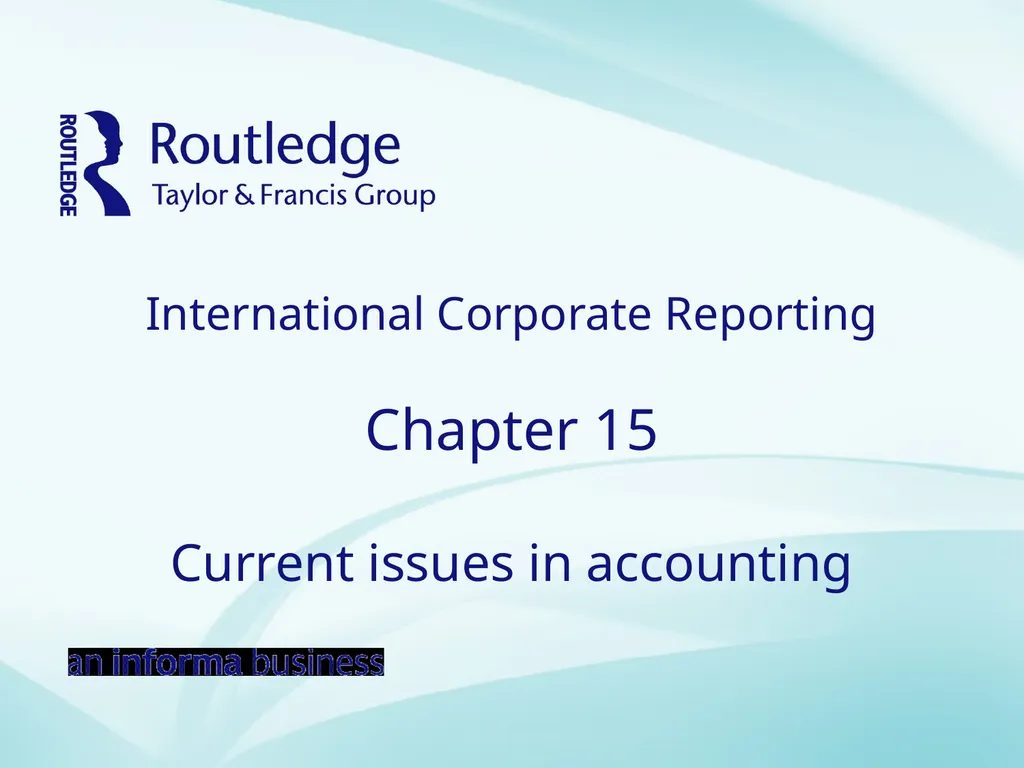International Corporate Reporting Chapter 15
Author : yoshiko-marsland | Published Date : 2025-11-01
Description: International Corporate Reporting Chapter 15 Current issues in accounting Fair value accounting Fair value defined Price that would be received to sell an asset or paid to transfer a liability in an orderly transaction between market
Presentation Embed Code
Download Presentation
Download
Presentation The PPT/PDF document
"International Corporate Reporting Chapter 15" is the property of its rightful owner.
Permission is granted to download and print the materials on this website for personal, non-commercial use only,
and to display it on your personal computer provided you do not modify the materials and that you retain all
copyright notices contained in the materials. By downloading content from our website, you accept the terms of
this agreement.
Transcript:International Corporate Reporting Chapter 15:
International Corporate Reporting Chapter 15 Current issues in accounting Fair value accounting Fair value defined Price that would be received to sell an asset or paid to transfer a liability in an orderly transaction between market participants at the measurement date. An ‘exit price’. Transaction price (an entry price) may be used at the point of initial recognition but that does not necessarily mean it represents the fair value of an asset or liability on its initial recognition –practical compromise. Measuring fair value The principal (or most advantageous) market at the measurement date under current market conditions. Would achieve highest and best use, or by selling it to another market participant that would use the asset in its highest and best use. Significant judgement required, using the core concepts of the standard’s principles-based framework. Fair value hierarchy (steps) IFRS 13 and US GAAP set out a ‘hierarchy’ for determining fair value depending on the nature of the market. Level 1 inputs are quoted prices in active markets for identical assets or liabilities that the entity can access at the measurement date. Level 2 inputs are not quoted but observable for the asset or liability, either directly or indirectly. Level 3 inputs are unobservable inputs for the asset or liability (estimated by management). Applying fair value Differences between IFRS Standards and US GAAP lie in the uses of fair value in measurement. US GAAP generally requires historical cost and prohibits revaluations except for certain categories of financial instruments, which are carried at fair value. Ability to revalue assets to fair value over a wider range of categories under IFRS Standards might create significant differences in the carrying value of assets as compared with US GAAP. Investment properties Investment properties, IFRS Investment property is held to earn rentals or for capital appreciation. IAS 40 Investment property allows alternative valuation approaches. Value at fair value, with no depreciation; or Keep at historical cost and depreciate in accordance with IAS 16 Property, plant and equipment. If fair value is the chosen policy, the asset must be revalued each year. Changes in the fair value are recognised through the income statement and reported in the statement of financial position as part of 'retained profit'. In the notes to the financial statements, if the asset is reported at historical cost then the fair value must also be disclosed. Investment properties US GAAP Under US GAAP investment













